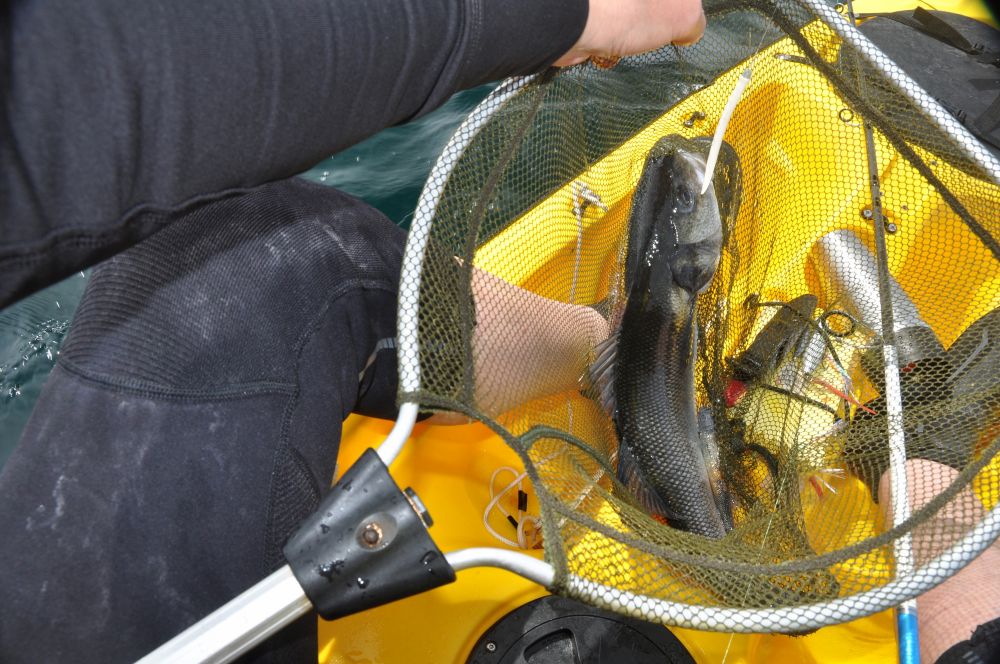
Read the article with FishingTheSpot: fishing bass with soft lures
Keep an eye on this subject!
Thousands of species spotlights and techniques but also all the local information about your city!



Meet other anglers near you and share your fishing fishing trips, afoot or on a boat, at sea or in freshwater
See the fishing tripsFishing bass with soft lures

Drift Fishing with soft lure.
Bass are fond of places where they can watch for their prey in the rocks. The biotopes developed in these structures (shallows, drop offs, wrecks...) are rich and attract wildlife from which the bass feeds itself. Soft lures are not themselves equipped with hooks but are designed to be mounted on a lead head that has a hook. The hook is above the lure, so when the lure hits the bottom, the hook does not stick.
The originality and structure of these lures make them ideal for fishing in hard-to-reach areas. Where hard lures and traditional mounts fail to catch, the soft lure considerably reduces the risk of loss and allows fishing as close as possible to interesting rocks.
The soft lure is mainly used for drifting. It is a question of passing over the spot by passing the lure as close as possible to the structures. So you have to be able to feel what is happening at the end of the line at any time to avoid trouble. Once the lure is at the bottom, it must be animated by pulling with the rod tip. Alternate between large, wide movements by gently descending, always in contact with the lure, and other smaller, more jerky movements that could decide which bar to attack. Whatever the techniques used, you should never hesitate to question yourself and change your spot, lure or technique if the fish does not bite.
Fishing with a soft lure.
Some fishermen use the soft lure as a hard lure. This allows them to reach hard-to-reach places, especially from the edge, but also to probe several layers of water in order to find the one in which the bass are active. It is therefore a question of throwing the lure, waiting longer or shorter depending on the layer of water you want to reach (you can even fish at the bottom), and then going up with erratic scion blows in order to excite the predators.
The main difficulty of this technique is that it is difficult to keep in constant contact with the lure to either hook the fish or avoid hanging it.
Setting:
In terms of setting, soft lure fishing is similar to hard lure casting. A lead of about 1.50 m should be attached to the braid with a connection knot. In order to avoid making knots each time the lures are changed, which can be tedious if the wind is from the side, a clip can be attached to the end of the leader.
Material:
Rod:
Any fisherman will say that the lighter the equipment, the more fun and, above all, the better the fishing. If you want to fish for a while without suffering from cramps, it is therefore advisable to use a fairly light rod (300gr max) with a casting power of between 10g and 40g.
Throwing power refers to the optimal weight of the lures that you can throw with your rod. This way you will be able to throw lures weighing between 10 and 40 grams better.
The length of the rod should not be too long, otherwise the lure will no longer be animated properly. Beyond 2m50, it will become more complicated for you.
Reel:
For a pleasant fishing, you also need a suitable reel. A 4000 or 3000 is enough.
Line:
To ensure that the line is always in tension, the braid must be adapted to the spot. The higher the current, the heavier the lure's leaded head will have to be. The thicker the braid, the more it takes the current. It is therefore necessary to find a balance between the resistance of the line, the plug that the current has on the line, and the weight of the lead head.
Put a 13/100th braid on your reel and to put a 30/100th fluorocarbon leader.
Lures:
Shads, Slugs, Worms are in these order the most efficient lures to catch bass.


